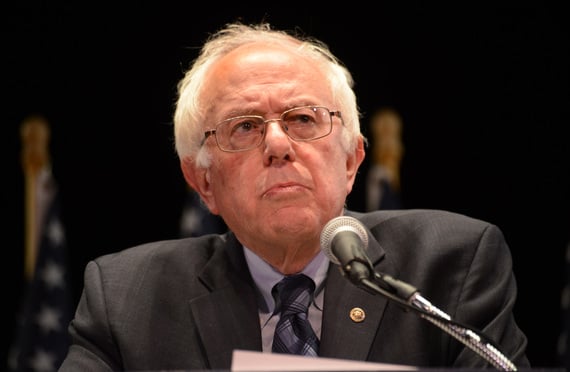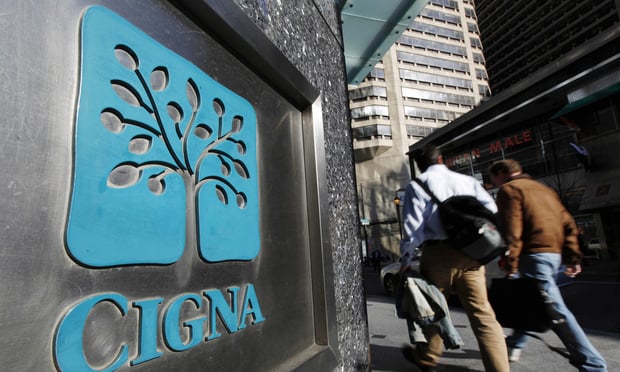 Dubiouspayment arrangements are a byproduct of a major shift in thehospital industry as hospitals buy up physician practicesand add doctors directly to their payrolls. (Photo:Shutterstock)
Dubiouspayment arrangements are a byproduct of a major shift in thehospital industry as hospitals buy up physician practicesand add doctors directly to their payrolls. (Photo:Shutterstock)
For a hospital that had once labored to break even, WheelingHospital displayed abnormally deep pockets when recruitingdoctors.
|To lure Dr. Adam Tune, an anesthesiologist from nearbyPittsburgh who specialized in pain management, the Catholichospital built a clinic for him to run on its campus in Wheeling,W.Va. It paid Tune as much as $1.2 million a year — well above thesalaries of 90 percent of pain management physicians across thenation, the federal government charged in a lawsuit filed thisspring.
|Related: Hospitals increasingly investing in (and profitingfrom) physicians
|In addition, Wheeling paid an obstetrician-gynecologist a salaryas high as $1.3 million a year, so much that her department bledmoney, according to a related lawsuit by a whistleblowingexecutive. The hospital paid a cardiothoracic surgeon $770,000 andlet him take 12 weeks off each year even though his cardiac teamalso routinely ran in the red, that lawsuit said.
|Despite the losses from these stratospheric salaries and perks,the recruitment efforts had a golden lining for Wheeling, thegovernment asserts. Specialists in fields like labor and delivery,pain management and cardiology reliably referred patients fortests, procedures and other services Wheeling offered, earning thehospital millions of dollars, the lawsuit said.
|The problem, according to the government, is that the effortsrun counter to federalself-referral bans and anti-kickback laws that are designed toprevent financial considerations from warping physicians' clinicaldecisions. The Stark law prohibits a physician from referring patients forservices in which the doctor has a financial interest. The federalanti-kickback statute bars hospitals from paying doctors forreferrals. Together, these rules are intended to remove financialincentives that can lead doctors to order up extraneous tests andtreatments that increase costs to Medicare and other insurers andexpose patients to unnecessary risks.
|Wheeling Hospital is contesting the lawsuits. It said in acountersuit against the whistleblower that its generous salarieswere not kickbacks but the only way it could provide specializedcare to local residents who otherwise would have to travel to othercities for services such as labor and delivery that are bestprovided near home.
|The hospital and its specialists declined requests forinterviews. In a statement, Gregg Warren, a hospital spokesman,wrote, “We are confident that, if this case goes to a trial, therewill be no evidence of wrongdoing — only proof that WheelingHospital offers the Northern Panhandle Community access to superiorcare, world class physicians and services.”
|Elsewhere, whistleblowers and investigators have alleged thatother hospitals, in their quests to fill beds and expand, disguisethese arrangements by overpaying doctors or offering otherfinancial incentives such as free office space. More brazenly,others set doctor salaries based on the business they generate,federal lawsuits have asserted.
|“If we're going to solve the health care pricing problem, thesekinds of practices are going to have to go away,” said Dr. VikasSaini, president of the Lown Institute, a Massachusetts nonprofitthat advocates for affordable care.
|'It's almost a game'
Hospitals live and die by physician referrals. Doctors generatebusiness each time they order a hospital procedure or test, decidethat a patient needs to be admitted overnight or send patients tosee a specialist at the hospital. An internal medicine doctorgenerates $2.7 million in average revenues — 10 times his salary —for the hospital with which he is affiliated, while an averagecardiovascular surgeon generates $3.7 million in hospital revenues,nearly nine times her salary, according to a survey released this year by Merritt Hawkins, a physicianrecruiting firm.
|Last August, William Beaumont Hospital, part of Michigan'slargest health system and located outside Detroit, paid $85 million to settle government allegations that it gavephysicians free or discounted offices and subsidized the cost ofassistants in exchange for patient referrals.
|A month later in Montana, Kalispell Regional Healthcare Systempaid $24 million to resolve a lawsuit alleging that itovercompensated 63 specialists in exchange for referrals, payingsome as full-time employees when they worked far less. Bothnonprofit hospital systems did not admit wrongdoing in theirsettlements but signed corporate integrity agreements with thefederal government requiring strict oversight.
|“It's almost a game of 'We're going to stretch the limits andsee if we get caught, and if we get caught we won't be prosecutedand we'll pay a settlement,'” said Tom Ealey, a professor ofbusiness administration at Alma College in Michigan who studieshealth care fraud.
|Dubious payment arrangements are a byproduct of a major shift inthe hospital industry. Hospitals have gone on buyingsprees of physician practices and added doctors directly totheir payrolls. As of January 2018, hospitals employed 44 percentof physicians and owned 31 percent of practices, according to areport the consulting group Avalere prepared for the PhysicianAdvocacy Institute, a group led by state medical associationexecutives. Many of those acquisitions occurred this decade: InJuly 2012, hospitals employed 26 percent of doctors and owned 14percent of physician practices.
|“If you acquire some key physician practices, it really shiftstheir referrals to the mother ship,” said Martin Gaynor, a healthpolicy professor at Carnegie Mellon University in Pittsburgh.Nonprofit hospitals are just as assertive as profit-orientedcompanies in seeking to expand their reach. “Any firm — it doesn'tmatter what the firm is — once they get dominant market power, theydon't want to give it up,” he said.
|But these hires and acquisitions have increased opportunitiesfor hospitals to collide with federal laws mandating that hospitalspay doctors fair market value for their services without regard tohow much additional business they bring through referrals.
|“The law is very broad, and the exceptions are very narrow,”said Kate Stern, an Atlanta lawyer who represents hospitals.
|'A man we need to keep happy'
Lavish salaries for physicians with high potentials forreferrals was the key to the business plan to turn WheelingHospital, a 247-bed facility near the Ohio River, into a profitmachine, according to a lawsuit brought by Louis Longo, a formerexecutive vice president at the hospital, and a companion suit fromthe U.S. Department of Justice.
|Between 1998 and 2005, Wheeling Hospital lost $55 million,prompting the local Catholic diocese to hire a private managementcompany from Pittsburgh, according to the suits. In 2007, thecompany's managing director, Ronald Violi, a former children'shospital executive, took over as Wheeling's chief executiveofficer.
|The hospital remained church-owned, but Violi adopted anaggressively market-oriented approach. He began hiring physicians —both as employees and independent contractors — “to capture for thehospital those physicians' referrals and the resulting revenues,thereby increasing Wheeling Hospital's market share,” thegovernment alleged. Along with greater market share came theability to bargain for higher payments from insurers, according toLongo's suit.
|The government complaint said at least 36 physicians hademployment contracts tied to the business they brought to thehospital. Hospital executives closely tracked how much each doctorearned for the hospital, and executives catered to those whosereferrals were most lucrative.
|In 2008, the hospital's chief financial officer wrote in aninternal memorandum that cardiovascular surgeon Dr. Ahmad Rahbar“is a man we need to keep happy” because the previous year “hegenerated over $11 million in revenues for us,” according to thegovernment's lawsuit.
|Dr. Chandra Swamy, an obstetrician-gynecologist the hospitalhired in 2009, was another physician whose referrals Wheelingcoveted. By 2012, Wheeling was paying her $1.2 million, four timesthe national median for her peers, according to Longo's suit.
|An internal memorandum by the hospitals' chief operating officerquoted in Longo's lawsuit said that the labor and delivery practicewhere Swamy worked was the biggest money loser among the specialtydivisions and that her salary made it “almost impossible for thispractice to show a bottom line profit.” But the memo went on toconclude that Wheeling should “continue to absorb the practiceloss” because it “would not want to endanger the significantdownstream revenue that she produces” for the hospital: nearly $4.6million a year, according to the lawsuit.
|In some cases it was the specialists who demanded lopsided paypackages. When Wheeling, eager to get a piece of the booming fieldof pain management, decided to recruit Tune, the anesthesiologistresponded that he wanted an “alternative/undefined model” ofcompensation that could earn him $1 million a year, according toLongo's lawsuit.
|Instead of making Tune an employee, Longo alleges, Wheelingleased clinic space to a company created by Tune and paid him$3,000 a day — more than $700,000 a year. In its initial contract,Wheeling also let Tune keep 70 percent of his practice's netincome, according to the government's complaint.
|Two years later, when the hospital's chief lawyer raised legalconcerns, Wheeling revised the contract, dropping theprofit-sharing provision but boosting Tune's daily stipend to$6,100. The government complaint said this was designed to make upfor the lost incentives and thus remained illegally based on howmuch business Tune generated for Wheeling. Indeed, Tune and hisclinic earned roughly the same amount of money as they had receivedbefore the new compensation package, the complaint indicated.
|Longo said his resistance to such deals rankled both Violi andphysicians. He was fired in 2015 because, he alleged, of hisobjections to various contracts the hospital struck withphysicians. The hospital countersuedin March, saying Longo had breached his fiduciary dutiesbecause he never reported any financial irregularities when heworked there. Wheeling said that after Longo was fired, hethreatened to file his lawsuit unless he received a settlement.Longo has asked that the case be dismissed and said in court papershe told Violi about his concerns on “multiple occasions.”
|As a whistleblower, Longo is entitled to receive a portion ofany money the government collects in its complaint. Longo's lawyersaid he would not comment for this story.
|In financial terms, Wheeling's tactics succeeded. According tothe government's suit, over the first five years under Violi,Wheeling earned profits of nearly $90 million. Violi's managementfirm, R&V Associates, also prospered: Wheeling more thandoubled the firm's annual compensation from $1.5 million in 2007 to$3.5 million in 2018. Violi and his lawyer did not respond torequests for comment.
|“The hospital has benefited tremendously from Ron's keenbusiness acumen,” Monsignor Kevin Quirk, the hospital boardchairman, said last week in announcingVioli's retirement.
|Wheeling's quality of care has not excelled commensurately,however, according to Hospital Compare, Medicare's consumer website.Patients with heart failure or pneumonia are more likely to diethan at most hospitals. In April, Medicare awarded WheelingHospital its lowest rating, one star, for overall quality.
|Kaiser HealthNews (KHN) is a national health policy news service. It is aneditorially independent program of the Henry J. Kaiser Family Foundation whichis not affiliated with Kaiser Permanente.
|Read more:
Complete your profile to continue reading and get FREE access to BenefitsPRO, part of your ALM digital membership.
Your access to unlimited BenefitsPRO content isn’t changing.
Once you are an ALM digital member, you’ll receive:
- Critical BenefitsPRO information including cutting edge post-reform success strategies, access to educational webcasts and videos, resources from industry leaders, and informative Newsletters.
- Exclusive discounts on ALM, BenefitsPRO magazine and BenefitsPRO.com events
- Access to other award-winning ALM websites including ThinkAdvisor.com and Law.com
Already have an account? Sign In
© 2024 ALM Global, LLC, All Rights Reserved. Request academic re-use from www.copyright.com. All other uses, submit a request to [email protected]. For more information visit Asset & Logo Licensing.








